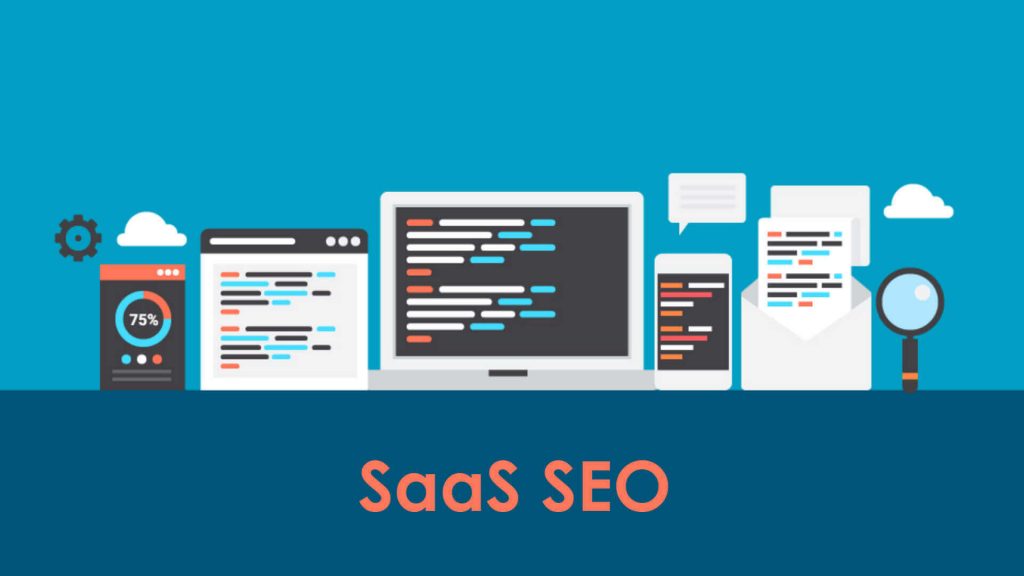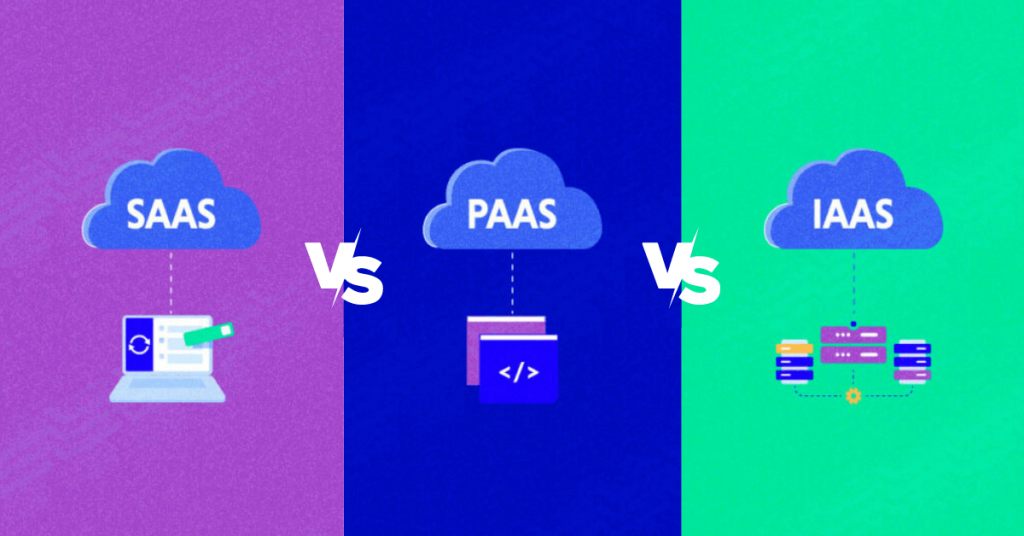Are you looking for SaaS SEO Checklist? If Yes, then you are at the right place. In this comprehensive guide, we’ll provide you with a step-by-step checklist to help you navigate the complex world of SaaS SEO and achieve remarkable results.
In this competitive SaaS market, online visibility is paramount for the success of your SaaS product. As a SaaS entrepreneur or marketer, you understand that having an exceptional software-as-a-service offering is just the first step. To truly thrive, you need to ensure that your SaaS product reaches a wider audience, stands out amidst the noise, and dominates search rankings.
Imagine the impact of your SaaS solution being discovered by the right audience, precisely when they are actively searching for a solution like yours. By mastering the art of SaaS SEO, you can achieve just that. It unlocks the potential to propel your business to new heights, attracting a stream of targeted organic traffic, boosting website visibility, and ultimately converting visitors into loyal customers.
So, fasten your seatbelt, as we embark on a journey to unlock the immense potential of SaaS SEO. Prepare to witness your software-as-a-service offering flourish as you attract the right audience, dominate search rankings, and achieve remarkable results. It’s time to take your SaaS business to new heights and leave a lasting digital footprint. Let’s dive in!
SEO Checklist For SaaS Companies: Understanding the Difference
Before diving into the essential boxes to tick in our SEO checklist for SaaS companies, it’s crucial to understand the difference between traditional SEO and SEO tailored specifically for the Software as a Service business.
Traditional SEO: This approach focuses primarily on attracting users and converting them into customers. Its main objective is to drive sales by optimizing for a shorter customer life cycle.
SEO for SaaS Companies: In contrast, SEO for SaaS companies not only aims to generate leads but also emphasizes nurturing them. Since most software services operate on a subscription basis, constant education and nurturing of leads are key to success. The focus expands beyond promoting the product to educating prospects about their pain points and the overall industry landscape. The goal of SaaS SEO is to establish the company as an authoritative source on the subject matter.
SaaS SEO includes ebooks, white papers, guidelines, and other sorts of educational resources far more frequently than traditional SEO. These resources play a significant role in nurturing leads, fostering trust, and positioning the SaaS company as a knowledgeable industry leader.
Your SEO Checklist includes:
- Conducting Keyword Research
- Optimizing On-Page Elements
- Creating High-Quality and Relevant Content
- Building a Strong Backlink Profile
- Optimizing for Mobile and Site Speed
- Monitoring, Analyzing, and Iterating
Importance Of A Checklist For SaaS SEO
A checklist can be a valuable tool for ensuring the effectiveness of search engine optimization (SEO) efforts for Software as a Service (SaaS) businesses. Here are some reasons why having a checklist for SaaS SEO is important:
1. Comprehensive Optimization:
An SEO checklist ensures that all essential aspects of optimization are covered. It acts as a reminder of critical tasks that need to be completed, such as keyword research, on-page optimization, technical SEO, link building, and content creation. By following a checklist, you can systematically address each area and achieve a comprehensive optimization strategy.
2. Consistency:
SEO is an ongoing process that requires consistent effort. A checklist helps maintain consistency by providing a structured approach to SEO tasks. It ensures that essential optimizations are regularly reviewed, updated, and implemented. Consistency is key to improving search rankings and maintaining visibility in search engine results pages (SERPs).
3. Efficiency:
With a checklist, you can streamline your SEO workflow and avoid missing important steps. It helps you stay organized, saves time, and reduces the likelihood of overlooking critical optimizations. By following a checklist, you can focus on completing tasks efficiently, ensuring that your SaaS website is optimized effectively for search engines.
4. Scalability:
SaaS businesses often operate in competitive markets and need to scale their SEO efforts as they grow. A checklist allows you to replicate successful optimization strategies across multiple pages, products, or campaigns. It ensures that your SEO practices are scalable and can be implemented consistently as your SaaS business expands.
5. Collaboration and Accountability:
SEO often involves multiple team members working together, including marketers, developers, content creators, and designers. A checklist serves as a collaborative tool, allowing team members to understand their responsibilities and track progress. It fosters accountability by providing a reference point for measuring the completion of tasks and achieving SEO goals.
6. Stay Up-to-Date:
SEO is a dynamic field with evolving best practices and algorithm updates. An SEO checklist helps you stay up-to-date with the latest trends and changes. You can regularly review and update your checklist to reflect new strategies, industry developments, and algorithmic updates. This ensures that your SaaS website remains optimized according to current SEO standards.
Overall, an SEO checklist for SaaS businesses serves as a valuable tool to maximize your SaaS website’s visibility, organic traffic, and overall search engine performance.
The Best SaaS SEO Checklist: 6 Steps For Success
Let’s look at the six steps you should follow to build a comprehensive, competitive, and effective SEO strategy:

Step 1: Conducting Keyword Research
Keyword research forms the foundation of any successful SEO strategy. It involves identifying the most relevant keywords and phrases that your target audience uses when searching for SaaS solutions. By understanding the language and intent behind these search queries, you can optimize your website and content accordingly.
To conduct effective keyword research, utilize tools such as Google Keyword Planner, SEMrush, and Ahrefs. These platforms provide valuable insights into search volume, competition levels, and related keyword suggestions. When selecting keywords, strike a balance between high search volume and manageable competition. Additionally, consider incorporating long-tail keywords that target specific user intents and have the potential to drive qualified leads to your website.
By conducting thorough keyword research, you gain a deep understanding of your audience’s needs and preferences. This knowledge enables you to create content that directly addresses their pain points, increasing the chances of your website ranking higher in search engine results.
Step 2: Optimizing On-Page Elements
Optimizing on-page elements is crucial for improving your SaaS website’s visibility in search engine results. By optimizing various on-page elements, you enhance the overall user experience and provide search engines with clear signals about the content and relevance of your web pages.
Title Tags:
Craft unique and descriptive title tags for each page on your website. The title tag is the first thing users see in search results, so it needs to be compelling and accurately represent the content of the page. Including your target keywords naturally in the title tag helps search engines understand the relevance of your page to specific search queries.
Meta Descriptions:
Meta descriptions are brief summaries that appear in search engine results below the title tag. While meta descriptions don’t directly impact search rankings, they play a significant role in attracting clicks. Write compelling meta descriptions that include your target keywords and highlight the value proposition of your SaaS offering. By enticing users with a concise and persuasive summary, you increase the likelihood of them clicking through to your website.
Headers (H1, H2, H3, etc.):
Headers, marked by H1, H2, H3, and other tags, provide structure and hierarchy to your content. Utilize headers to break up your content into sections and subtopics, making it easier for readers to navigate and understand. Incorporate your target keywords in the headers, especially the H1 tag, to signal the main topic of the page to search engines.
URLs:
Craft SEO-friendly URLs that are descriptive and contain relevant keywords. A clear and concise URL structure improves both user experience and search engine visibility. Avoid using lengthy URLs with unnecessary parameters or random strings of numbers and characters. Instead, create URLs that are easy to read and understand, giving users and search engines a clear indication of what the page is about.
Image Alt Text:
Optimize the alt text of your images by incorporating relevant keywords. Alt text provides textual context to search engines and improves accessibility for visually impaired users. Use descriptive alt text that accurately describes the image and its relevance to the content. By optimizing alt text, you increase the chances of your images appearing in image search results and improve the overall accessibility and user experience of your website.
When optimizing on-page elements, remember that your primary goal is to provide clear and relevant information to both users and search engines. By optimizing these elements, you enhance the visibility and accessibility of your content, leading to improved search rankings and increased organic traffic.
Step 3: Creating High-Quality and Relevant Content
Creating high-quality and relevant content is the cornerstone of successful SaaS SEO. Engaging and informative content not only attracts your target audience but also establishes your expertise and authority in the industry.
Identify Pain Points and Address Them:
To create valuable content, you must first understand your target audience’s pain points and challenges. Conduct market research, engage with your audience through surveys or social media, and analyze customer feedback. By identifying their pain points, you can tailor your content to directly address these issues and provide effective solutions. This approach positions you as a trusted resource and helps you build credibility with your audience.
Provide Actionable Tips, Best Practices, and Case Studies:
While it’s essential to address pain points, it’s equally important to provide actionable tips, best practices, and case studies. Your content should offer practical advice that your audience can implement to improve their SaaS strategies. Break down complex concepts into step-by-step instructions, share real-life examples, and provide insights from successful case studies. By offering actionable information, you empower your audience and establish yourself as an authority in the SaaS industry.
Use Data, Statistics, and Research:
Data-driven content carries immense value and helps build trust with your audience. Incorporate data, statistics, and research findings into your content to support your claims and provide evidence-backed insights. Cite relevant studies, industry reports, and surveys to add credibility and demonstrate that your recommendations are based on reliable information. Data-driven content has a higher chance of being shared and linked to by other websites, boosting your SEO efforts.
Incorporate Multimedia Elements:
To enhance user engagement and make your content more engaging, incorporate multimedia elements such as images, videos, and infographics. Visual content not only breaks up the text and improves readability but also increases user retention. Use images to illustrate concepts, embed videos for tutorials or demonstrations, and create infographics to present data in a visually appealing format. These multimedia elements make your content more interactive and shareable, increasing its reach and potential for backlinks.
Fresh and Updated Content:
Regularly updating your content is vital for maintaining its relevance and SEO performance. Outdated content can harm your search rankings and fail to provide value to your audience. Continuously monitor industry trends, keep up with the latest developments, and revisit your existing content to ensure it remains accurate and up-to-date. Update statistics, refresh case studies, and incorporate new insights to provide the most relevant and current information to your audience.
By creating high-quality and relevant content, you not only attract and engage your target audience but also increase the likelihood of earning backlinks and social shares, ultimately improving your search rankings.

Step 4: Building a Strong Backlink Profile
Building a strong backlink profile is crucial for improving your SaaS website’s authority and search rankings. Backlinks are links from other websites that point to your site, indicating that others find your content valuable and worth referencing. Here are some strategies to build a high-quality backlink profile:
Guest Posting on Relevant Industry Blogs and Publications:
Guest posting is an effective way to reach a wider audience, establish your thought leadership, and acquire valuable backlinks. Identify reputable industry blogs and publications that accept guest posts and offer unique insights. Craft well-researched and valuable articles tailored to their audience. When your guest posts are published, they not only provide exposure but also generate backlinks from authoritative sources within your industry.
Collaborating with Influencers and Thought Leaders:
Engaging with influencers and thought leaders in your industry can help you gain exposure and build quality backlinks. Build relationships with influencers by sharing their content, commenting on their posts, and offering valuable insights. Collaborate on content projects such as expert roundups, interviews, or co-created articles. When influencers or thought leaders mention or link to your SaaS offering, it strengthens your backlink profile and increases brand visibility.
Participating in Industry Forums and Q&A Platforms:
Joining industry forums and Q&A platforms allows you to connect with your target audience directly. Actively participate in discussions, answer questions, and provide valuable insights. By establishing yourself as an authority and helpful resource, you can attract organic backlinks from users who find your contributions valuable. When appropriate, reference your content as a helpful resource, further increasing the chances of earning backlinks.
Creating Link-Worthy Content:
Producing high-quality content that naturally attracts backlinks is a strategic approach to building your backlink profile. Develop comprehensive guides, original research studies, or thought-provoking opinion pieces that offer unique insights and value to your audience. Focus on creating content that solves problems, offers unique perspectives, or challenges existing norms. Link-worthy content attracts natural backlinks from other websites, contributing to your overall SEO efforts.
Monitoring and Disavowing Low-Quality Backlinks:
Monitoring your backlink profile is crucial to maintaining a healthy link profile. Regularly analyze your backlinks using tools like Google Search Console to identify any low-quality or spammy backlinks. Such links can harm your SEO efforts. If you find any backlinks that are potentially harmful or irrelevant, disavow them using Google’s Disavow Links tool. This helps prevent search engines from associating those backlinks with your site.
By actively building a strong backlink profile, you enhance your website’s authority and increase its visibility in search results. Quality backlinks from reputable sources act as votes of confidence for your content and improve your overall SEO performance.
Step 5: Optimizing for Mobile and Site Speed
With the increasing use of mobile devices, optimizing your SaaS website for mobile and improving site speed is crucial for SEO success. Here’s how to ensure your website provides an excellent user experience across all devices:
Implement Responsive Design:
Responsive design is an approach that ensures your website automatically adjusts and adapts its layout to provide an optimal viewing experience on different screen sizes and devices. By implementing responsive design, you create a consistent and user-friendly experience regardless of the device used to access your website. This improves usability and encourages visitors to engage with your content, leading to longer dwell times and increased conversions.
Optimize Loading Speed:
Website loading speed is a critical factor for both user satisfaction and search engine rankings. Users expect fast-loading websites, and search engines prioritize websites that deliver an exceptional user experience. To optimize your website’s loading speed, consider the following tips:
- Minimize file sizes: Compress images and optimize file formats without sacrificing quality. Reduce the size of HTML, CSS, and JavaScript files.
- Reduce server response times: Optimize server configurations, use caching mechanisms, and consider content delivery networks (CDNs) to minimize server response times.
- Leverage caching: Enable browser caching to store static files on users’ devices, reducing the need to fetch data from the server on subsequent visits.
- Prioritize visible content: Implement lazy loading techniques to load images and other non-essential elements only when they become visible to the user. This ensures the critical content loads quickly and improves the perceived loading speed.
By optimizing site speed, you enhance user experience, reduce bounce rates, and improve the overall performance of your SaaS website, leading to higher search rankings.
Step 6: Monitoring, Analyzing, and Iterating
SaaS SEO is an ongoing process that requires continuous monitoring, analysis, and iteration. Here’s how to effectively measure and refine your SEO strategies:
Monitor SEO Performance:
Regularly monitor key metrics to evaluate the effectiveness of your SEO efforts. Utilize tools such as Google Analytics, Google Search Console, and other SEO platforms to track organic traffic, keyword rankings, backlink profiles, bounce rate, time on page, and conversion rates. These metrics provide valuable insights into the performance of your SEO strategies and help identify areas for improvement.
Analyze Data and Identify Trends:
Analyze the collected data to identify trends, patterns, and areas for improvement. Look for patterns in keyword performance, content engagement, and conversion rates. Identify keywords that are driving the most traffic and conversions, as well as pages that may need optimization. By analyzing the data, you can gain insights into user behavior and preferences, allowing you to refine your content strategy and target the right keywords effectively.
Refine and Improve SEO Strategies:
Leverage the data and insights gathered to refine your SEO strategies. Adjust your keyword targeting, optimize underperforming pages, and update content based on user engagement metrics. Continuously seek opportunities to improve your website’s visibility, user experience, and conversion rates. Regularly review and update your content to keep it fresh and relevant. By staying proactive and responsive to data, you can continually improve your SaaS SEO performance.
Stay Up-to-Date with SEO Trends:
SEO is an ever-evolving field, and staying up-to-date with the latest trends and algorithm updates is crucial for long-term success. Follow reputable SEO blogs, attend industry conferences, and engage with the SEO community to stay informed about the latest developments. Adapting to changes and implementing best practices as they emerge will help you stay ahead of the competition and maintain your SEO dominance.
By continuously monitoring, analyzing, and iterating your SEO strategies, you can stay at the forefront of SaaS SEO and achieve long-term success in the competitive landscape.
Conclusion – SaaS SEO Checklist
Mastering SaaS SEO requires a systematic approach and continuous optimization. By following this step-by-step checklist, you can improve your search rankings, increase organic traffic, and drive valuable conversions for your SaaS business. Remember to conduct thorough keyword research, optimize on-page elements, create high-quality content, build a strong backlink profile, optimize for mobile and site speed, and continuously monitor and refine your strategies. Implement these tactics consistently, and you’ll be well on your way to dominating search rankings and achieving long-term success in the competitive SaaS landscape.
We hope this guide has provided you with valuable insights and actionable steps to elevate your SaaS SEO game. Remember, success in SaaS SEO is a journey, and by investing time and effort into implementing these strategies, you’ll be able to reap the rewards of increased visibility, organic traffic, and conversions. For further learning and implementation, be sure to explore additional resources and tools tailored to the unique needs of your SaaS business.
FAQs –
SaaS SEO refers to search engine optimization strategies and techniques specifically applied to Software-as-a-Service (SaaS) companies. SEO is the process of improving a website’s visibility and ranking in search engine results, with the goal of attracting more organic (non-paid) traffic.
A checklist in SaaS SEO refers to a list of tasks and best practices that need to be followed to optimize a website for search engines. It serves as a guide to ensure that all important SEO elements are properly implemented and optimized. The checklist typically includes items such as keyword research, on-page optimization, technical SEO, content creation, link building, and monitoring analytics. Following an SEO checklist helps ensure that no crucial steps are missed and improves the overall effectiveness of SEO efforts.
SEO contributes to the growth of an enterprise SaaS (Software-as-a-Service) by driving organic traffic, generating qualified leads, increasing brand visibility, competitive advantages and providing a competitive edge in the market.
Your SEO Checklist must include below 6 steps:
1. Conducting Keyword Research
2. Optimizing On-Page Elements
3. Creating High-Quality and Relevant Content
4. Building a Strong Backlink Profile
5. Optimizing for Mobile and Site Speed
6. Monitoring, Analyzing, and Iterating

